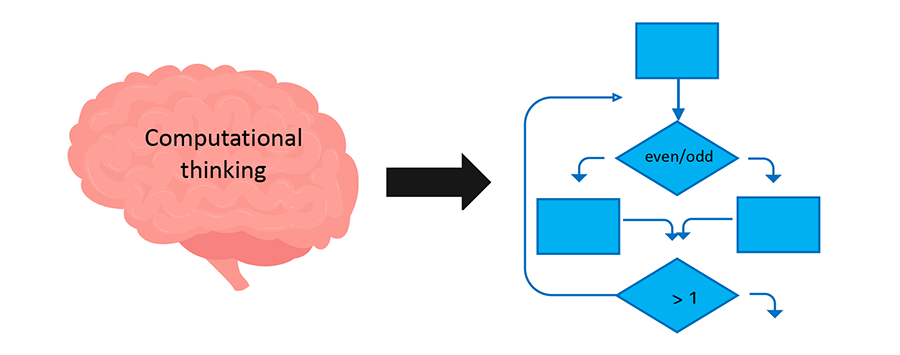Cal's Corner
Computational Thinking: What, Why, When
Computational thinking is a term that has received a tremendous amount of interest in the last few years.
At the moment, the emphasis on computational thinking in schools is somewhat sporadic. Competitions, conferences, professional learning activities, funding, and research are much more evident in Asia and Europe than other parts of the world. At a recent international conference on computational thinking, of over 600 attendees there were only two participants from Australia (myself included) and only two participants from North America. These numbers highlight that the Europeans are far ahead in all aspects of computational thinking.
For many educators, computational thinking is the equivalent of coding (usually with robotics and more recently drones) and offered in club activities after school, on Saturdays, or during holiday coding camps. In these situations, the participants are those who have an interest in the mechanics of coding. Computational thinking is NOT the same as coding. It is the precursor which enables the door to open for a rapidly increasing number of jobs in the fields of digital technology. The fact that computational thinking is gradually being included in the school curriculum means that it must be available for all, not just for a few eager participants at clubs or holiday camps.

In 2021, the Programme for International Student Assessment (PISA) will develop the standards for international mathematics assessment to include more aspects of computational thinking. Computational thinking is not specific to mathematics, but research (in multiple European countries) is now showing that mathematical thinking is closely linked to computational thinking. Hence, PISA has linked computational thinking to the broader discipline of mathematics.
The critical issues … facing societies throughout the world all have a quantitative component to them. Understanding them … requires thinking mathematically. Such thinking in more and more complex contexts is not driven by the reproduction of the basic computational procedures…but rather by reasoning, and the important role of reasoning demands a reconsideration of what it means for students to be competent in mathematics. Mathematical literacy goes beyond problem solving, to a deeper level, that of mathematical reasoning and computational thinking, which provides the intellectual acumen behind problem solving in the 21st century. 1
The quote above suggests that computational thinking is closely linked to mathematical reasoning. This implies that computational thinking can be imbedded in many activities that are already part of good mathematical practices. It also means that computational thinking can begin from the very first years of school. With a few adjustments, exclusions and inclusions of content, it is rather easy to gradually increase the focus on computational thinking in the school curriculum. The components of computational thinking are described in different ways depending on the writer, but four aspects seem to be common to all authors. These are the ability to decompose situations, search for patterns, draw or write abstractions, and create algorithms. Each of these components will be the focus of a separate discussion in the next four blog posts.
1 PISA 2021Mathematics Framework, 2018
Be sure to join our webinar series focusing on computation thinking.
Computational Thinking to Strengthen Elementary Mathematics: Patterning and Abstraction
Wednesday, September 18, 2019 at 4:00 – 5:00 pm EDT
Click here to learn more.




